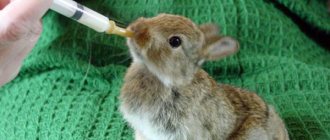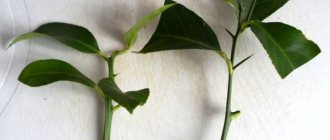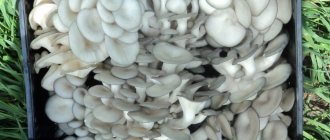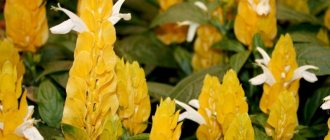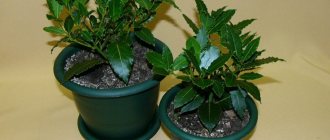How rabbits spend their first days
Childbirth in a female rabbit begins approximately 27-32 days after mating. The birth itself lasts no more than 1 hour. With successful delivery, offspring are born - up to 10-15 pieces per litter (depending on the breed, time of year, age of the female).
Pink newborn rabbits look very fragile and helpless. The weight of a newborn rabbit is about 50 g. But do not be afraid of such miniature sizes. Literally from the second day, the animals begin to actively grow and become covered with fur. And month-old babies already fully take on the outlines of adult rabbits and gain weight up to 0.5 - 1 kg (depending on the breed).
For information on how to determine the gender of a rabbit, see this article.
How baby rabbits develop day by day
| Physiological development of rabbits according to age | |
| 1 day | Rabbits are born bald, blind, and cannot hear anything. But at the same time they already have 16 milk teeth. The weight of a newborn eared baby is from 45 to 90 g. |
| Day 2 | The weight of the rabbits doubles. The first fluff begins to appear. |
| 3 – 7 day | The outer fuzz of fur begins to noticeably appear. The rabbits continue to actively gain weight. From the 7th day hearing begins to emerge. |
| 8 – 10 day | By day 10, with normal development, the baby rabbits begin to open their eyes. |
| 11 – 14 days | At two weeks the cubs try to move and crawl out of the nest. Body weight becomes 5 times greater than birth weight. |
| 15 – 20 days | Eared babies actively explore the cage and feeders. They try to play and run. They are actively growing hair. After day 18, teeth begin to change. |
| 21 day | The eared beetles completely leave the queen cell. They are actively running and frolicking. They eat adult food. They become similar to adult relatives. |
| Rabbit 1 month | Rabbits reach a weight of 500–1000 g. They eat from a feeder with their mother. The fur is completely growing back. The first molt begins. |
| Two month old rabbit | It is believed that two-month-old rabbits are already quite independent and are separated from their mother. They eat well and respond to their owners. It is already possible to determine the sex of Ushastikas without any problems. |
| Adult rabbits | At 3–5 months, a rabbit at home can weigh from 2 kg. Intensive growth is observed up to 4 months. Three months of age is the beginning of puberty for eared animals. |
Eye opening time
Rabbits open their eyes 11-12 days after birth. A two-week-old rabbit can already see the world around him well, but it is necessary to control the activity of the offspring. Not entirely clumsy babies can easily get lost and not find their way to the nest, or inadvertently stumble upon the sharp corners of feeders or drinking bowls.
Features of development
Young rabbits can begin to leave the nest even if the enclosure is dry and warm. The strength of the immune system and their overall health in the future depends on how animals eat at this age. The female takes care of the offspring during the first few months, then the rabbits gain independence and can be removed.
From the third day, the rodents' eyes open, and they begin to slowly explore the world. Around the same time, the training of the rabbits begins, which consists of the female showing containers for food and water.
It is worth considering that newborns are characterized by caution and timidity, and therefore they will be very reluctant to contact people
From the moment their eyes open, the young animals become more independent and begin to move around the enclosure without the help of a female rabbit. Despite the fact that the period of feeding with milk is not so long, it is extremely important for building the immunity of animals. If for some reason the female refuses to feed the cubs, they will most likely die. Farmers have long found a way out of this situation: you can warm the baby rabbits and feed them from a pipette, but this will not guarantee a successful outcome. A newborn rabbit is very weak and easily susceptible to various diseases.
On average, the body of a young animal can be considered stronger 20 days after birth. In the third week, the most fearless rodents begin to crawl out of the uterine house. It is common for naturally curious animals to get acquainted with their surroundings and get to know the territory where their life will pass. If leaving the nest ahead of time, this may become a provoking factor for aggressive behavior in the future. From day 20, rabbits are able to feed themselves and eat food intended for adult animals.
How to behave after the birth of baby rabbits
Before a female rabbit goes into labor, the breeder should ensure that there is a queen cell in the cage. The family house should be comfortable, roomy, without sharp corners, cracks, or holes. Be sure to observe the behavior of the female before the expected birth. If she does not start building her nest and plucking fluff from her belly, the expectant mother will need to help prepare a place for the babies.
An important aspect is cutting the nails of the expectant mother. They need to be trimmed in advance so that after giving birth, the female cannot injure the offspring with them.
Females can give birth to rabbits in almost 10 minutes. Sometimes this process can take up to 1 hour, especially in first-time mothers. During childbirth, it is important to leave the female rabbit alone and not interfere with the lambing unnecessarily.
It is so inherent in nature that the female copes with everything on her own: she helps the future baby emerge with her teeth and licks them from the placenta, eats the placenta, and gnaws the umbilical cord. In a normal course after giving birth, the female rabbit leaves the nest with the offspring for some time: she rests and watches the baby. It is at this moment that it is important for the owner to inspect the litter. Further, all care comes down to monitoring the physiological process of growth and development of cute fluffies.
Among the recommendations are the following:
- The cage with the queen cell should be placed in a quiet, calm, shaded place.
- Look into the nest no more than once a day (frequent looking will frighten the already timid female, and aggressive mothers will only become more irritated).
- In case of mixed keeping, exclude access of males to women in labor and queen cells.
- In winter, it is worth maintaining the optimal temperature in the nest. If necessary, children can turn on an infrared lamp, lay out heating mats, or simply provide them with bottles of warm water.
What is coccidiosis in rabbits?
Coccidiosis is caused by a single-celled parasite of the order Coccidia of the genus Eimeria. Therefore, the second name of the pathology is eimeriosis. These parasites are specific, settle only in the body of rodents, and are harmless to other farm animals. In the rabbit body they capture certain organs:
- coccidia living in the small intestine - Eimeria intestinalis, media, magma, calcicole;
- settling in the liver – Eimeria stiedae.
Outside the host’s body, coccidia are in the form of cysts, that is, they have a shell that protects them from temperature fluctuations and other negative environmental factors. Having penetrated the rabbit’s body, the parasite loses its protective shell, begins moving through the digestive tract, and settles in a suitable organ.
When can baby rabbits be picked up?
Novice rabbit breeders are convinced that after birth, it is forbidden to touch the baby rabbits in the queen cell. They argue that a female rabbit may abandon her newborn offspring due to human intrusion.
Experienced breeders probably know that it is necessary to inspect the queen cell in the first 48 hours after lambing. This audit helps to detect the condition of newborns (remove crippled and dead ones, add rabbits from other litters, warm them up) and, if necessary, correct the nest.
Sometimes babies can be born infected. But it is almost impossible to determine this before opening your eyes. It is also important here (especially in the first days) to monitor the animals’ feces, and in the case of very liquefied stools, to involve a veterinarian.
Inspection of the nest after birth is carried out as follows:
- The female is separated by a partition or transferred to another cage.
- They wash their hands with laundry soap, and all subsequent manipulations are carried out exclusively with gloves, so that the human smell does not remain on the animals, and the rabbit does not abandon the children.
- They check all the babies in the nest (the dead ones must be removed immediately).
- If necessary, adjust the nest and cover the offspring thoroughly with down.
- After inspecting the nest, the mother can be allowed to visit the rabbits.
Be sure to ensure that the female feeds the children some time after giving birth. If she does not feed them in the first 12 hours, they will all die.
Growth and development of rabbits
This can happen due to the negligence of a female who jumps out of the nest with sucklings clinging to her.
If the hypothermic baby rabbit is still alive, there is hope for saving it. Each breeder has his own techniques for warming up baby rabbits. Try one of the methods suggested below.
As soon as the baby begins to show signs of life and move its limbs, return it to the nest with its siblings - the temperature there is optimal and this will increase the likelihood that the affected baby will not miss a feeding. How to transfer baby rabbits to an adoptive mother There are really important reasons for transferring baby rabbits to another female. Here are the most common:. How to give baby rabbits to another rabbit? Just take the baby rabbit, mark its ear by putting a dot with a permanent marker of a color unusual for rabbits, such as lemon or green, and place it in a new nest.
There is nothing extremely complicated or requiring enormous preparation in this. From time to time, or better yet every day, update the point. These marks won't be of much use if you forget which litter the colored bunnies came from, so write down the date, litter numbers, and color of the markings in a notebook.
Search form
Take into the habit of writing down all the more or less significant events, since it is human nature to forget and valuable information may be lost, and complete confusion will reign on the mini-farm.
It is best to transfer newborn rabbits to a new mother; the older they get, the more difficult it is to do. But there are situations, for example, when a female dies, when it is necessary to add grown cubs up to 14 days old.
This idea can be successful if the chosen rabbit is calm and experienced enough. Before placement, the female is removed from the cage and the orphans are placed with her siblings. In most cases, everything will go well, the worried female will soon come to her senses and begin to feed the suddenly increased offspring. If you are unsure about your female rabbit and want to try her out as a foster mother, try alternate feeding.
Advice for rabbit breeders when refusing to feed their offspring with rabbits
Sometimes female rabbits refuse to feed their babies. This behavior of animals can lead to the rapid death of rabbits. To prevent this from happening, experienced breeders advise:
- Keep the rabbit's home and queen cell clean and tidy.
- Maintain optimal temperature, humidity, and make sure there are no drafts.
- Monitor the availability of clean drinking water in the drinking bowl.
- Feed animals correctly.
- Replace bedding in cages in a timely manner.
- Protect animals from noise and do not disturb them unnecessarily.
If, after all, the newly-made long-eared mother refused to nurse, she has no milk or the female died during childbirth, there is no need to despair. With some effort, offspring can be raised in other ways: by forcibly placing the baby rabbits with the mother, transferring them to another lactating female, or resorting to artificial feeding.
Moving in with another female
This is one of the most optimal ways. A more experienced rabbit with a pronounced maternal instinct can easily feed her own and “other people’s” babies, without even paying attention to the change in the number of offspring. In order not to frighten off the female, it is better to carry out the replanting procedure when the eared one is absent from the nest.
The baby rabbits are transferred to the nest with clean, washed hands and gloves, preventing foreign odors from coming into contact with their skin.
Force feeding
If the rabbit has milk, but simply due to inexperience does not feed the babies, then you can force lactation at first. In this case, the rabbit breeder will need an assistant. It is most convenient for one person to lay the female down for feeding, hold her, and another place the baby rabbits to the nipples.
As babies become full, their bellies swell a little and their bodies become more elastic. This signals the saturation of the animals. Forced feeding is recommended until the rabbit herself takes the initiative to feed the children.
Artificial feeding
Of course, artificial feeding is a very labor-intensive method. It is resorted to only as a last resort, when it is not possible to use other methods. It is worth remembering that not all milk is suitable for rabbits. The best are considered to be special substitute mixtures for rabbits or goat milk.
Food should be fresh and heated to a temperature of 37-38 C. A diet and food dosage are mandatory, the volume of which increases according to age. Rabbits should not be overfed. The owner will constantly need to massage the tummy of the “artificial” to establish peristalsis.
How to feed a newborn rabbit if the female refuses
This happens quite often. This may happen for the following reasons:
- The female has no milk.
- The animal experiences stress, which is triggered by the appearance of offspring.
- Her nipples hurt when feeding.
- Hormonal imbalance.
How to determine if the queen has abandoned her babies
If a mother feeds her children, then they have dense and rounded tummies. Otherwise, they are sunken.
If the baby is hungry, then his skin will gather in folds due to dehydration of the body. The offspring becomes weak and stops responding to the environment and to the breeder’s touch.
What to feed
For feeding, a milk formula should be prepared, which includes:
- skim milk powder - 50%;
- coconut or sunflower oil - 10-12%;
- whey protein or egg yolk - 30-32%;
- fortified supplements or minerals - the rest.
Also, many feed rabbits with cow's or goat's milk, but the latter is better suited for feeding.
How to feed baby rabbits without a rabbit: pacifier or syringe?
Artificial feeding can be done using a syringe, but without a needle. However, the most comfortable and safest method is a special pacifier, which can be purchased at a pet store.
Are you comfortable with syringe feeding? Poll Options are limited because JavaScript is disabled in your browser.
The baby needs 5 ml of milk per day
Feeding frequency
One baby needs 5 ml per day. milk or formula.
You need to feed about 3-5 times a day. The frequency of feeding depends on the individual characteristics and needs of each baby.
How to feed
To feed your rabbit, you need to hold it in one hand and the pacifier in the other. In this case, the baby should be held horizontally downwards. The front part of the body can be raised slightly or turned to one side. You can also feed him in an upright position.
When the rabbit grows a little, you just need to support it with your hand, without making sudden movements.
"Artificial feeding of rabbits and abdominal massage"
Newborn rabbits cannot cope on their own. If the mother does not refuse them, then she licks the babies, thereby stimulating muscle contraction, which makes the process of defecation and urination easier.
To prevent the rabbits' bladder and intestines from becoming full, the owner needs to massage the abdomen.
To do this, you need to rub it, touching the anus area. Movements should be soft but confident. The breeder needs to stimulate the tension of the abdominal muscles.
This should be done with your finger, which is moistened with warm water in advance. You can also wrap it with a damp cloth or use a cotton swab, which also needs to be moistened in water.
The massage lasts from 15-30 seconds to several minutes. You need to finish when your bladder has emptied.
The breeder should be careful and patient, because some rabbits will not be able to cope on their own for quite a long time. It happens up to several weeks of age.
Do not rub or press too hard on the tummy, as this may cause redness and irritation of the baby's skin. If this does happen, then you need to anoint your abdomen with soothing calendula ointment.
Some newborns die
When baby rabbits leave the nest
All rabbits begin to leave the nest at three weeks of age. Getting to know the “adult” world involves some nuances:
- From this moment, acquaintance begins not only with the external habitat, but also with “adult” food - the baby rabbits try food from their mother’s feeder, which should only contain products that are harmless to babies. Gradually, the eared animals will move from such complementary foods to the normal diet of adults.
- During this period, it is necessary to change the bedding in the cage so that the miniature rabbits do not get dust into their eyes. The best option is to temporarily lay down a clean, thick cloth or towel.
- Breeders conduct a control examination of the physiological development of the offspring. If it is discovered that the rabbits are not growing well, then the rabbit’s menu is immediately revised or the baby rabbit is transferred to a female with more high-calorie milk. If there is a weakened rabbit in the brood, it is better to remove it from the nest so that the female rabbit does not begin to notice the difference among the cubs and does not abandon the entire brood because of this.
- From the 28th day, rabbits begin to be vaccinated against diseases according to the approved vaccination schedule.
Video Inspection on the 3rd day after birth
Why do baby rabbits leave the nest early?
When a mother rabbit throws her cubs out of the nest or the baby rabbits begin to emerge before three weeks of age, there may be several reasons for this behavior:
- Lack of milk in the female. A decrease in the amount of rabbit milk or a decrease in its nutritional properties indicates that the rabbit is not eating properly. To restore normal lactation, you should review the eared mother’s diet, make it more nutritious, and adjust the diet and volume of food. Taking good care of your rabbit is the key to getting healthy offspring from her. If lactation cannot be restored, then the offspring are placed with another lactating rabbit or artificially fed.
- Increase in air temperature in the queen cell. In order for the baby rabbits to feel comfortable and cozy, the temperature in the nest should be controlled. When it becomes very hot and stuffy, the problem can be eliminated by moving the cage to a cooler room or to the open air under a canopy.
It is important to remember that the rabbits should not emerge from the queen cell before the due date. If this problem occurs, you should quickly find and eliminate the cause, otherwise you may lose the brood.
When can weaning take place?
It is recommended that older rabbits be separated from their mother no earlier than 1.5 - 2 months of age, provided that they already eat full adult food, do without milk, and do not get sick. The weaning procedure is carried out gradually, removing 2 rabbits from the litter daily. In this way, the female will physiologically and painlessly stop lactation.
Typically, females are placed in cages of 3-4 individuals, and males are castrated or transferred to individual cages (provided they are kept for breeding).
After weaning, the most important aspect is the diet of the young animals. They should receive a high-calorie diet rich in proteins and carbohydrates. It is recommended to enrich the food composition with mineral and vitamin premixes. If 3-4-month-old young animals gain weight well and quickly, then the transition to adult food has taken place well, and the selected nutrition meets all the nutritional needs of actively growing organisms.
Video NEWBORN BABIES
When can weaning take place?
At the age of one and a half months, a new life period begins for baby rabbits - they switch to the diet of adult livestock. It is most optimal to place the young animals in other cages as soon as they reach 45 days of age. At this point, rodents are able to obtain the necessary vitamins and microelements from plant food, and they no longer need breast milk. Young animals need to be fed up to 5 times a day, with a break at night.
Experienced livestock breeders recommend giving rodents special feed containing milk powder and antioxidants in the first weeks of independent life.
Every farmer must remember that it is necessary to introduce new food to young animals gradually and begin complementary feeding several days before the rabbits begin to eat on their own. The weaning period is very stressful for rabbits, and therefore it is recommended to minimize all negative factors:
- changing the cage;
- food base;
- temperature regime;
- excess noise.
To reduce anxiety in animals, it is best to use nesting jigging. First of all, you need to separate the strongest and strongest pair of rodents, after another couple of days, add the next ones, and so on until all the rabbits move to new habitats.
Rabbits ready for weaning
The weakest animals can be left for fattening and subsequent slaughter. The strongest are expected for the replacement herd. It is also worth considering the gender of the rabbits: males and females should sit separately from each other. If aggression is detected within a group, animals with a bad character are recommended to be separated and then culled.
If the baby rabbits don't come out for a long time
Experts believe that a delay in the emergence of rabbits from the queen cell indicates some problems with their health associated with developmental delays or disturbances in the functioning of the nervous system. Each specific case must be examined separately.
Female rabbits, being in the vast majority of cases excellent mothers, according to the “scenario” worked out over hundreds of thousands of rabbit generations, create optimal conditions for survival for their offspring. But sometimes in this delicate process there is a need for human help.
Fluffy diseases and care for them
The mother rabbit does not feed her babies - what to do?
After birth, all small rabbits are at risk of various ailments. Among the common diseases of rabbits are the following:
- viruses, such as hemorrhagic disease;
- pasteurellosis;
- plague;
- flatulence;
- eye diseases;
- scabies fleas.
This is just a list of what young animals face. You can tell if an animal is sick by looking at its eyes. The lens and eyeball change their color and appearance. Also, if eared animals scream, it means they are sick. Inactivity also indicates a health problem.
Habitat is important for rabbits. The place to start is the bedding. The usual one is not suitable for newborns. The best way to this day is a clean and not very hard cloth, maybe a towel, to prevent dust from getting into the mucous membrane of the baby's eyes.
Baby rabbits
What breeds of rabbits can be crossed with each other?
There are several dozen different breed combinations. By crossing certain breeds, you can improve the result in terms of the rate of weight gain and the amount of feed required to keep animals. You don't need to invent anything yourself. Scientists have already created mating-friendly options.
Compatibility table:
| Females | Males |
| chinchilla | white giant, Vienna blue |
| Vienna blue, New Zealand, white giant | chinchilla |
| silver | gray giant |
| white giant, black-brown, Vienna blue | Californian |
| white giant, chinchilla, Vienna blue | New Zealand |
| Californian, New Zealand | black-brown |
| butterfly, New Zealand | white giant |
| gray giant | silver |
If you need quick weight gain, then the best options are white giant males with female chinchillas, boys of the latter with Viennese blue girls. For this purpose, it is allowed to mate gray giant rabbits with silver rabbits. When breeding for meat, it is recommended to cross the following species: silver males with Vienna Blue females, chinchilla boys with silver girls.
Arrangement of the nest
For a pregnant rabbit, a more spacious cage is allocated in which a queen cell can be placed, and there will be room for active little rabbits. The queen cell is placed in the far part of the enclosure , insulated with clean soft hay, fabric, sawdust and the mother’s faded fur. Hard straw is not suitable; it can damage the delicate skin of babies. The walls can be made of chipboard or thin boards to keep it warm and avoid drafts. During this period, it is very important to create favorable conditions for newborns and the mother rabbit.
What you need to know about artificial feeding
In most cases, the female rabbit feeds the young on her own, but there are exceptions to any rule. For example, a female dies during childbirth or does not have milk, then the farm owner has to feed the animals to prevent them from dying. Artificial feeding is best done with goat's milk, which has more fat content than cow's milk and is more nutritious. When the rabbits begin to grow up, they can begin to be given food familiar to such animals, not forgetting about the water where mineral supplements are mixed.
Some veterinary pharmacies sell special mixtures that can replace rabbit milk. This mixture has the form of a powder; it is diluted in the required amount of water according to the attached instructions.
As the rabbits grow older, they begin to feed them with hay, paying due attention to its quality. Food that is wet or has a moldy smell is not allowed. When distributing grass and vegetables, the owner must be sure that such feed has not been treated with chemicals that will cause problems with the digestive system in young animals.
Particular attention should be paid to how artificial feeding occurs. It should be as close as possible to the process laid down by nature. The farmer must remember that the female rabbit will not feed her offspring every second. Artificial feeding involves adherence to a clear schedule and dosage, which will change as the young grow. Excess food or lack of food is equally harmful to rabbits.
For feeding, syringes with a small nipple or special pipettes, which are sold in veterinary pharmacies, are used. Baby rabbits may not begin to respond to an artificial pacifier the first time. Before starting the first feeding, it is recommended to apply milk to the baby's mouth so that he can lick it off. Feeding should be done very carefully so that milk does not enter the respiratory system.
It is necessary to remember about the sterility of syringes and pipettes for feeding. Newborn rabbits have weak immunity, and even the most harmless infection can become fatal for them. The farmer is advised not to forget about personal hygiene and be sure to wash his hands before starting feeding. The queen cell must also be kept clean: timely cleaning must be done there.
Force-feeding should be avoided; it is necessary to allow food to be tasted in small quantities, but somewhat more often, until the baby rabbit gets used to the pipette. If you completely refuse milk, you should seek help from a veterinarian.
At the time of feeding, the animal is held perpendicular to the floor, with its head slightly raised. This position is as safe as possible and prevents milk from entering the respiratory system. Each feeding under natural conditions ends with the mother rabbit licking the bellies of the cubs. This procedure must be replaced with a massage that stimulates the act of defecation. For massage you will need a cotton swab, which is moistened with warm water. The movements should start from the middle of the abdomen and go down to the anus.
From the 14th day of life, rabbits begin to defecate without massage. However, this period is approximate, and therefore the owner should pay attention to whether the rabbit goes to the toilet on its own or not.
Keeping little rabbits
Fluffy rodents are valued for their tasty meat and valuable fur.
Rabbits are bred in large enclosures or small cages, depending on the size of the farm. The nests are covered with female rabbits only before the birth of the young. The female is preparing for the fact that the rabbits will have to be nursed. The babies who have managed to get stronger come out of the nest. If a female rabbit does not breed young animals for a long time, the livestock grows sick or too weak. Whatever the reason why the baby rabbits do not leave the nest, the farmer needs to solve it urgently.
Rabbits are blind from birth and cannot hear anything at all. The first fur does not appear on furry animals right away either. Only on the third day can you notice the first hair on the rabbits’ body. From the second week, the young begin to explore the world around them. Small forays from the nest last no more than half an hour, the cub quickly returns back. Immature babies quickly get tired and lose energy. While the rabbits are with their mother, the furry young animals do not require additional care. Experienced farmers recommend keeping contact with small rabbits to a minimum, otherwise the female may abandon the entire litter.
The rabbit's nests are located far away, in the very corner of the enclosure. After the birth of the young, males are placed in separate cages or avoid nests. In the first month after giving birth, the female needs special care. Her complementary feeding changes completely, and the usual dry mixtures and green food are diluted with vitamins and mineral complexes. The babies are completely dependent on the female and her well-being.
In order for the brood to leave the nest, it is necessary to create conditions that suit both the female and the young.
The optimal temperature that needs to be maintained in an enclosure with newborn rabbits is 18°C. Animals' feeders and water bowls should contain only high-quality food and clean water. Rabbits open their eyes during the first week of life. Which mode is suitable for rabbits that will soon leave the nest?
When do rabbits start eating on their own?
Immediately after leaving the nest, the babies begin to taste food from their mother's feeder. It is not entirely suitable for feeding, so farmers install separate dishes for the cubs.
At the age of 20 days, rabbits can be given:
- grated carrots;
- grass in the form of granules;
- fresh soft hay;
- sprouted grain.
Attention! The digestive system of small rabbits is weak
New foods are introduced carefully, offering them in small portions
It is important to monitor your pet’s body’s reaction. At two months of age, rabbits completely switch to adult food.
Their diet becomes varied and includes:
At two months of age, rabbits completely switch to adult food. Their diet becomes varied and includes:
- hay;
- fresh herbs;
- twig food;
- grains and legumes;
- vegetables.
Preparing for Jigging
Female rabbits are good and caring mothers who rarely abandon their own litter. There are cases when after giving birth the female weakens and dies. Then caring for the brood falls entirely on the shoulders of the farmer. For the rapid growth of rabbits, a person creates conditions for their mother:
- balanced nutrition and vitamin supplements for the female;
- constant access to clean, fresh water;
- optimal temperature regime, which cannot be lower than 18°C;
- protecting the rabbit from noise and other irritants.
The young grow very quickly, and soon each furry baby becomes an adult rabbit. From the first week, thick fur appears on the rabbit, which only increases. Rabbits are valued precisely for their own “fur coat,” the quality of which is formed from the first day of life. Eared animals quickly gain weight, so the farmer needs to provide the right and balanced complementary foods for the female and her brood.
On the 11th day, the baby rabbits’ eyes open completely, and within a month the young animals increase their own weight ratio several times.
When the eyes open, the rabbit sits less and less in the nest. A box that serves as a nest for a brood should not become a permanent residence for small furry animals. Young animals should not stay in nests for too long. Young rodents leave the queen cell on the 18th day of life. At this age, animals begin to feed on their own, but this will depend on how many days the babies need to adapt. 18 days is enough for the development of immunity in rodents.
Problems when raising rabbits
When breeding rabbits, every farmer may face a number of problems. Difficulties can arise both during pregnancy and childbirth, and after it.
Premature birth
Premature birth, which does not cause concern and does not pose a danger to babies, occurs on the 28th day of pregnancy.
Causes of early birth:
- female age 2–3 years or more;
- multiple pregnancy;
- births following a short period of time;
- too low or high temperature during gestation.
Another situation that is dangerous to the health of the female and the offspring is miscarriage.
Factors that provoke fading of pregnancy:
- poor nutrition, poor diet;
- diseases of the female, in particular of an infectious nature;
- nervous stress.
The danger is that dead embryos do not always come out of the female’s womb on their own.
In this case, the decomposing embryo threatens the health and life of the animal. To avoid this, the pregnant female is provided with attentive care:
- a balanced diet;
- keeping warm and clean;
- always available fresh water;
- routine veterinary examinations.
Newborn mortality
The death of an offspring after a couple of hours, days, or the birth of still babies most often occurs due to infection of a pregnant rabbit with an infectious disease, so it is important for the farmer to know what rabbits are sick with and vaccinate them on time.
The following pet diseases lead to sad consequences:
- hemorrhagic disease (HDD);
- coccidiosis;
- listeriosis;
- myxomatosis;
- pasteurellosis;
- tularemia;
- fascioliasis.
Non-viable cubs often appear due to errors in caring for the female:
- stress;
- poor nutrition;
- non-compliance with the regime of detention.
The female scatters the cubs
The behavior of females after giving birth and their attitude towards the cubs also depend on the conditions of detention and state of health.
Find out in more detail why a mother rabbit scatters her babies immediately after giving birth.
Factors that cause a female to scatter her rabbits:
- psychological state - the problem can arise as a result of stress: due to the proximity of other animals, smells, noises. Eliminate the causes of a nervous breakdown and the rabbit’s behavior will improve. It is better to cull an aggressive animal that tramples its offspring for no apparent reason;
- It is better not to allow a sick animal to mate at all . A female rabbit who is weak after giving birth will not be able to care for her offspring and will scatter them;
- mastitis - most often infections of the mammary glands develop due to bites of cubs and poor hygiene in the cage;
- In addition to hygiene, it is important to properly arrange the queen cell - it should be spacious, warm and not exposed to bright lighting;
- incorrect diet of the female - a hungry mother will throw her cubs away from her, because due to malnutrition she has poor lactation;
- hunting - for a female who is ready to mate immediately after giving birth, it is advisable to have a “calming” mating, after which she can return to her duties.
The female can throw several rabbits out of the nest; here she instinctively culls weak or sick cubs herself. This is not a pathology, but care for viable offspring, inherent in nature.
Female cannibalism
The lack of maternal instinct and possible postpartum problems can be predicted by the behavior of the pregnant woman. She will not show the slightest desire to build a nest.
We advise you to read what to do if a female rabbit eats baby rabbits.
Other reasons for eating offspring:
- After giving birth, the female rabbit experiences an acute lack of nutrients in her body and is very thirsty. If the owner of the animal does not worry about a sufficient amount of water in the cage or a balanced diet, the female can eat newborns;
- a lack of milk will force the female rabbit to eat the weakest cubs in order to feed the remaining viable ones;
- Cannibalism can provoke severe stress. After giving birth, the female rabbit needs peace and quiet, feeling safe for the offspring;
- the close presence of a male and the urge to “hunt”.
Eating stillborn rabbits is not a pathology; the female will not allow the presence of a decaying body in the nest for instinctive reasons.
Baby rabbits squeak
The main reason that the cubs crawl out of the queen cell and squeak is hunger. The first thing to do is examine the cubs. If their bellies are sunken and their skin is wrinkled, it means the mother does not have enough milk. Her diet needs to be reviewed and adjusted.
It is also advisable to make sure that the queen cell is warm enough. The cold can push babies to look for a warmer place. You may need to install a heater in the cage.
Important! The cage with the offspring must be carefully inspected and protected from predatory rodents (rats, weasels).
Often the cubs are eaten by predators rather than the mother rabbit. The success of raising young animals depends largely on the farmer. He must create the most comfortable living conditions for the pregnant rabbit, think over a balanced diet and arrange the queen cell.
